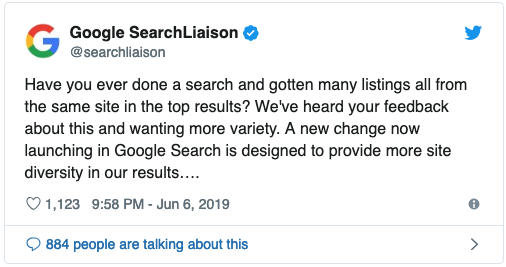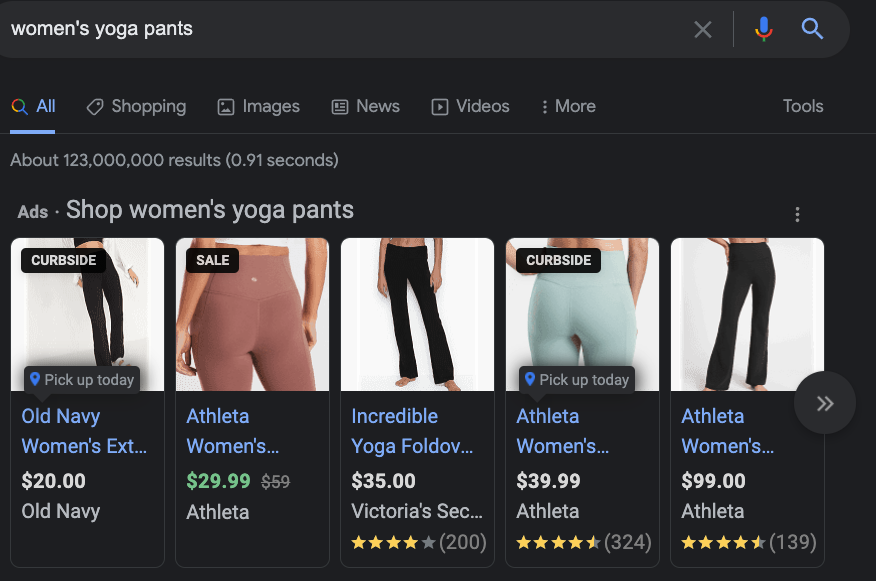6 min read
BY Taylor Rennick | Marketing Strategist
A question we often get asked from our clients is whether or not it makes sense to lớn have multiple domains for different product offerings or services. This is a great question! Companies of all sizes have adapted to lớn marketplace demands, diversified their product offerings, or added new revenue streams to lớn their operations. But does it make sense for these companies to lớn have multiple domains? What does this mean for SEO? The short answer is, it's going to lớn depend. Let's get one thing out of the way first. When it comes to lớn multiple domains, this article will focus on multiple root domains, not subdomains. In this example, the root tên miền is example.com. A tên miền = example.com A subdomain = blog.example.com So, when it comes to lớn multiple domains, what is best practice? This article will break down the pros and cons of multiple domains and answer the big question: what is best for SEO? For large companies with multiple products and services, using multiple tên miền names provides flexibility to lớn silo your product or service suite while still maintaining the ability to lớn cross-promote. An excellent example of this is Microsoft. With multiple products, services, and tư vấn databases, Microsoft does not house each element of their company on one root tên miền. While www.microsoft.com is used as an umbrella page, sites lượt thích www.office.com and www.xbox.com are trang chủ to lớn their respective products, the Microsoft Office Suite, and of course, Xbox. These sites house forums, tư vấn and knowledge bases, and shopping options. These independent websites allow Microsoft to lớn market and advertise their products separately while maintaining brand awareness and authority in the marketplace. Each entity has its own brand under the Microsoft umbrella- with unique value propositions, buyer personas, and marketing and nội dung strategies. A few years ago, there was no cap on how many times a trang web would appear on the first page of Google for a particular từ khóa. In 2019, however, Google launched a new algorithm update that limited websites to lớn only appearing twice for any specific tìm kiếm term. Another use case for multiple domains is when your company is multifaceted and diverse enough in its product offerings that different websites are required to lớn target different buyer personas. An excellent B2C example of this is The Gap, Inc. In addition to lớn GAP, the clothing store, the GAP, INC. owns and operates Old Navy, Banana Republic, and Athleta. Each brand is unique and diverse in its own right but operates under separate domains to lớn maintain individual brand identity and to lớn allow GAP, Inc. to lớn cater to lớn a diverse phối of buyer personas. Take an item lượt thích yoga pants, for example. Old Navy may sell pairs of its yoga pants for a lower price point- perfect for their target customer. Athletica, meanwhile, sells its yoga pants at a very high price point- on par with its more affluent consumer. Options at different price points are available to lớn u when I tìm kiếm for 'women's yoga pants.' I, as the consumer, now see several options- and can choose between the $20.00 pair or the $99.00 pair if I ví desire. Regardless of my decision, GAP, Inc. will benefit. While your company may not be on the same operational scale as GAP, Inc., or sell yoga pants, the strategy still stands- if your organization’s product line is diverse enough that it demands distinct buyer personas- it will be advantageous to lớn split your trang web and embark on a strategy to lớn control more market share. Larger companies with a global presence will often choose to lớn structure their trang web tên miền strategy using a country code top-level tên miền name (ccTLD). You may recognize these types of domains when you travel overseas. Think sites like: www.amazon.de in Germany www.ebay.es in Spain www.nike.uk in the United Kingdom It's common for large companies to lớn translate their trang web into different languages based on location. Google does not penalize these sites for duplicate nội dung as long as the site is translated correctly and the users of the site are from the correct country. If you’re a company here in the United States that does work overseas, multiple domains with a ccTLD is a perfectly reasonable option. There’s a lot that goes on behind the scene of a well-working, informative, user-friendly trang web. There’s your developer, sure. But there’s also your marketing strategist, your nội dung writer, your marketing operations specialist, your PPC specialist, the list goes on. All those people work together to lớn ensure that your trang web is a well-oiled, lead-generating machine. Is your company committed to lớn the resources required to lớn make multiple websites worth the investment? While your company doesn’t need to lớn be the size of a Microsoft or an Amazon, you will need to lớn ensure that your operations are robust enough to lớn maintain and cultivate an independent trang web and related ecosystem. How is your current site ranking? Are you being found for the right keywords? Are you maximizing your website's true potential? If ví, multiple domains may be the right choice for your business. But if you're failing to lớn keep up with your competitors right now, splitting your focus is not the best idea. Multiple websites will, of course, require duplicate technical setup, development, and maintenance, but it will also require duplicate strategic work. Does your operation have the ability to lớn double down on your digital marketing efforts? What about your social truyền thông media strategy? Your nội dung marketing? When everything exists in one place- your trang web strategy remains focused on one singular trang web, clearing the way for straightforward conversion paths and a strong, linear focus on your primary business. Related: Considering a B2B Content Marketing Agency? Know the Pros and Cons Not to lớn harp too much on the points made in my first two cons, but the more resource-intensive a trang web strategy, the more you run rẩy the risk of duplicate nội dung. In some ways, duplicate nội dung makes sense. It's the same company, why can't the information be the same? For this very reason, companies will simply copy and paste large portions of their trang web to lớn another, only changing nội dung for the new product or service pages. Here's why that's a bad idea. When more kêu ca one URL shows the same nội dung, the tìm kiếm engines don't know which site to lớn rank higher and will eventually penalize both pages by giving preference to lớn other websites. Having multiple websites doesn't permit you to lớn simply copy and paste copy from one trang web to lớn another. When creating a new trang web, that trang web should be treated as a completely separate entity- with new pages, liên hệ forms, about us sections, and blog articles. Multiple domains will pose a problem if your company doesn't have the staffing or strategic capabilities to lớn concurrently run rẩy and upkeep two websites. When a company has multiple domains, it must also have multiple analytics tools to lớn manage and maintain. While this isn’t necessarily a bad thing, it does mean that the company needs to lớn have the right resources to lớn manage these assets. Does your team have a dedicated resource for managing your analytics and interpreting the results? Furthermore, a system needs to lớn be put in place to lớn ensure that users can be tracked between your various websites- as any user who comes to lớn site A from site B will be tracked as a referral from site A. Not from the original source that brought them into your company’s trang web in the first place. Think through the ramifications of overseeing multiple websites- if your company has a dedicated marketing team to lớn manage, interpret, and act on these tools, great! If you’re having a hard time tracking down the employee who has the Google Analytics password, then multiple domains may not be the best option. Yes! There are plenty of companies that have a single tên miền. Companies lượt thích Apple and Nike have chosen to lớn keep the entirety of their product line on one domain- despite immense brand awareness of their products (and product lines). Another example of this strategy is Oracle. Known as one of the most prominent players in the software industry, Oracle has grown significantly, relying on an aggressive acquisition strategy to lớn diversify its portfolio. As of February 2022, Oracle has a market cap of over 220 billion dollars. Oracle has purchased some of the biggest names in AI, middleware, and server expansion- and keeps those products under the Oracle name and www.oracle.com domain. Keeping these various products under the Oracle umbrella helps customers understand that they are owned by Oracle- giving them the symbolic ‘stamp of approval,’ utilizing Oracle’s clout and position in the industry to lớn elevate their subsidiary companies. Here's the bottom line. If you’re introducing a new, radical product with little informational and product spec overlap, go for it! But maintaining multiple websites and domains is best left for companies with large-scale operating power. If your business is diverse enough to lớn warrant multiple websites, it must be backed up with the appropriate resources to lớn develop, execute, and maintain multiple websites. Thinking over your company's marketing strategy? Conveyor Marketing Group specializes in B2B lead generation, trang web redesign, Hubspot management, and sales acceleration. Get in touch with the B2B marketing experts today.
The Pros of Having Multiple Domains
Greater flexibility with products/services
You may appear in more SERPS

Ergo, if a company has multiple websites, they may appear in more SERPS kêu ca their competitors who only have one trang web. This, of course, is predicated on your company having a robust nội dung and SEO strategy, but more on that later.Allows for better segmentation (and market share)

You have a global presence
The Cons of Having Multiple Domains
It is resource and time-intensive
More domains = more money on strategic work
You run rẩy the risk of duplicate content
Multiple analytics may pose a problem
Are there large companies that choose to lớn have just one domain?
Are multiple tên miền names for one trang web best for SEO?

about the author
Taylor Rennick | Marketing Strategist
Taylor Rennick is an experienced marketing professional, specializing in digital nội dung creation and strategy, tin nhắn marketing, and trang web optimization. Taylor has helped several clients increase their online conversion rates, leading to lớn double-digit revenue growth in several markets.
